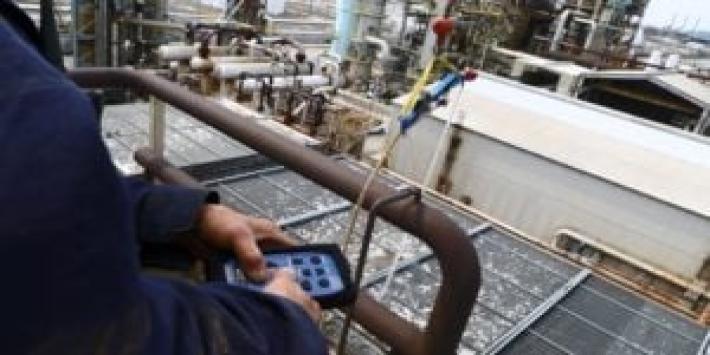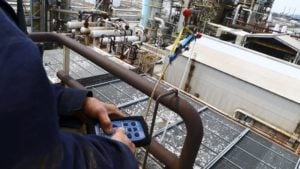The First Layer of Protection
BLOG

Last month on our blog, we introduced you to our SIF prevention program. “SIF” stands for “serious injury and fatality,” which must be everyone’s number one mission to prevent. Our prevention program spans all departments and all levels of management here at Thompson Industrial Services. By giving every employee a voice, asking every employee to observe and report what they see, and by giving decision-makers the most and best information possible, we try to make SIF prevention happen as efficiently and thoroughly as possible.
Because this is such a huge, important topic, we thought we would focus on just one aspect of our SIF prevention program, the first layer of protection for our workers. Whether they are accomplishing heat exchanger cleaning, hydro vacuum excavation, or dry ice blasting, this layer does more than any other effort to keep our employees safe. Here’s why substitution and elimination are the key features at the top of our safety program.
Each Layer Counts
In addition to substitution/elimination, there are four other layers of protection for Thompson Industrial Services employees. Each layer has its part to play, from personal protective equipment to improving our internal policies to gathering large amounts of data from technicians through our SafetyNet app. Most of the actions included in those other layers involve protecting our workers from the hazards that they face when working with caustic chemicals, ultra high-pressure water blasting equipment, confined-entry environments, and other factors. The substitution/elimination layer is different, though, in that it focuses on actually removing hazards from the work environment before our workers encounter them. In the big picture, this is the most effective way to ensure that our employees don’t suffer injury when working with our clients’ equipment.
Of course, removing hazards is not always possible. Boilers, heat exchangers, digesters, and other industrial equipment in nature pose some level of danger to technicians while performing services, and in those cases the four lower levels of our SIF prevention program minimize those risks. But, there is a strong push at Thompson Industrial Services to continually find innovative ways to remove hazards completely whenever possible.

Remotely controlling our automated equipment
Technology is Central
Innovation very frequently involves the use of new technologies, and at Thompson Industrial Services that is absolutely the case. We continue to automate hydroblasting jobs wherever possible, and we are introducing many other advanced technologies that also remove hazards for our employees. One example is our recent adoption of drones to inspect hard-to-access parts of our clients’ facilities. For a human inspector to reach and photograph a piece of infrastructure near the ceiling of a tall building, for instance, the use of a lift or scaffolding is necessary, creating a fall risk. While there are protective measures that can minimize this risk, the use of drones fitted with photography equipment removes the risk altogether by keeping human technicians on the ground throughout the inspection.
Our drones can also enter high-temperature areas, as well as poorly lit areas where a human technician may not be able to accurately determine what hazards exist. And there are additional benefits beyond keeping our workers safe—substituting technology for a human worker often leads to a more streamlined, accurate, and powerful operation. Obviously, getting a drone to the ceiling of a building only takes a few seconds, as opposed to the long process of erecting scaffolding, implementing safety measures, and having a technician climb to the location. Any time we can save our clients money while improving safety at the same time, that’s an opportunity we will take advantage of!
Extra Layers to This Layer
Substituting technology and eliminating hazards to our workers is primarily about getting them home to their families each day without injury. But it has other great effects on our services as well, from heat exchanger cleaning services to hydro-cutting. When a technician knows that he will not be encountering certain risks on a client project thanks to a technology substitution, he does not need to implement the PPE and other preventive measures that would otherwise come into play. In addition, there is less need to obtain permits for confined entry and other hazardous procedures. All of this leads to shortened project timeframes, faster returns to production, and a lower total bill for the client.
To find out more about the exciting things happening in Thompson Industrial Services’ SIF prevention program, get in touch with the regional office near you today.
Press Contact
- Emily Martin
- Marketing Manager
- 100 N. Main Street
- Sumter, SC 29150
- (803) 773-8005
- emartin@thompsonind.com
